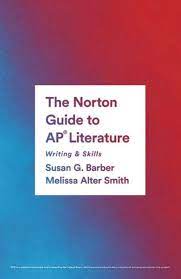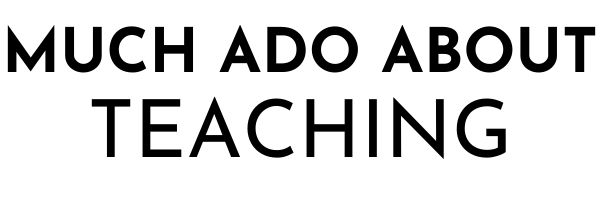I’m going to tell you why I think comments on essays are a bad idea… but first a quick story.
About five years ago, my Sunday nights were spent at a mostly-empty Starbucks. For hours I would read and comment on all the papers and pages I accumulated over the week. By Monday afternoon, many of those papers ended the day in my wastebasket. Students would read their score, glance through the comments, and consign them to the trash.
It was disheartening.
I was asking students to write thoughtfully, and in return, I believed I was responding thoughtfully by providing specific, targeted, and individual feedback to everyone.
But it didn’t really move writers forward. It was mostly-wasted effort. Seeing those papers in the trash didn’t fill me with lasting satisfaction. Instead I had a slow-brewing resentment for expending so much time and working so hard only to see it unappreciated.
THE FEEDBACK MYTH
I was guilty of the “feedback myth” as described by Susan Brookhart, author of How to Give Effective Feedback to Your Students.
“Much feedback on student writing is wasted, because students don’t use it. Many teachers subscribe to the myth that students will use the feedback “next time” they write something similar. However, it’s not true that students have some sort of file drawer in their heads, with files labeled according to type of writing, that they will magically open at some point in the future.”`
Realizing this, it changed my whole approach to feedback.
Here’s what I began to understand about commenting on papers:
- There is not a lot of room in the margins of papers to give feedback. Anything I wrote had to be so terse that it often was ineffective.
- It was one way. I was commenting, and unless a student had the courage to ask me a question, that’s where the conversation ended.
- It was paradoxical. Students expected comments but did not value them. They valued knowing that I read their work and responded to it, but they did not act upon the feedback I was giving.
- By the time we got to our next writing assignment, students forgot their individual means to improve.
WORK
My approach to the work was well intended but totally misguided. There are three ways to look at work:
- The old definition of work was a reflection of manual labor because it multiplied force by distance. Work was a reflection of how much muscle was required to plow a field or clear a forest.
- Then in the industrial economy work was measured in inputs of time and effort. This was demonstrated in a punch card or how much sweat you produced on your brow.
- A more modern definition of work in the information age looks at the leverage one has to produce the highest desired outcomes across the broadest spectrum.
All those nights at Starbucks I was grading papers in an industrial mode. My work was based on how many comments I could write and for how long. It did not matter if I increased my productivity by commenting faster or even working longer, the result remained the same. The papers ended up in the wastebasket.
A BETTER APPROACH TO FEEDBACK
Instead of focusing on how many comments I could write, I began to focus on using the greatest leverage I had while trying to effect the greatest improvement. My students cared about their grades more than they did my feedback. This was my leverage.. Second, instead of devoting my efforts on the individual level, I began to charge my energies into the broadest outcome.
My new, improved way to move writers forward looks like this:
- Instead of waiting for the weekend to score essays, I focused my efforts on getting all the essays graded the day they were assigned. Here’s the catch – I didn’t comment on a single essay. Grading AP exams for five years taught me that I can be efficient and effective if I just score and move on. Taking the time to think about feedback – and then write it – on each essay really slowed me down. Now I could supercharge my turnaround time by reading, scoring, and repeating.
- Now as I grade, I keep in mind the most common weaknesses. I’m not generating a running list of everything. I’m looking to cast the widest net and find the most glaring area for improvement.
- I pick one weakness and develop a mini lesson on it the next day. Teach the skill, then use one student sample of a model that demonstrates the skill effectively. Pull two more student responses, ones that did not meet the expectation of the skill, and have students revise them.
- I revisit the mini lesson, the skill, and one more student sample in need of improvement a week later. This helps sustain the learning and reinforce the skill.
- Many students want a justification for their score, since there are no comments. I use this as leverage to offer writing conferences before and after school in which I can work one-on-one with a student and go through their essay along with the rubric. I have found that these conversations – which allow for a deeper give and take that comments could never provide – has had the greatest impact on student improvement. As a result of the conference, students can rewrite for a higher grade. This satisfies their need for great grades while it gives me a far better chance for improvement.
I have seen a dramatic increase in my students writing scores using this approach. It has also given me greater satisfaction while grading because my efforts are more efficient, more personal, and have a more lasting impact.













7 comments
Christopher Griffin
Thank you so much for this article. It mirrors & confirms my own experience in many ways.
Sean
Thanks for this, Brian! I can’t wait to share this at my Eng depth meeting as we head back to school. Also, the irony that this article will generate comments is hilarious to me. I am jet lagged.
Ron
This is a clear post with a specific action. Thanks!
denise
Phenomenal idea. I always allow for revision based on my comments, but this is MUCH MORE EFFECTIVE sounding. Thank you!
Shandy
Fantastic conversation! Thank you for sharing your journey!
Anne
I enjoyed the content here, but if you feel your students are not using your feedback, consider dedicating more time to the actual revision process—which I think you have started doing according to your ideas here.
Designate a feedback day. Use it. I also have my students keep a feedback sheet based on our feedback day comments. It is a colored sheet of paper with a column for strengths and weaknesses. We review this before each essay and cross off what we have worked on as the semester progresses. I guess the idea here is that if the instructor does not dedicate time to the feedback and revision process, the student will not either. Thanks for sharing ideas!